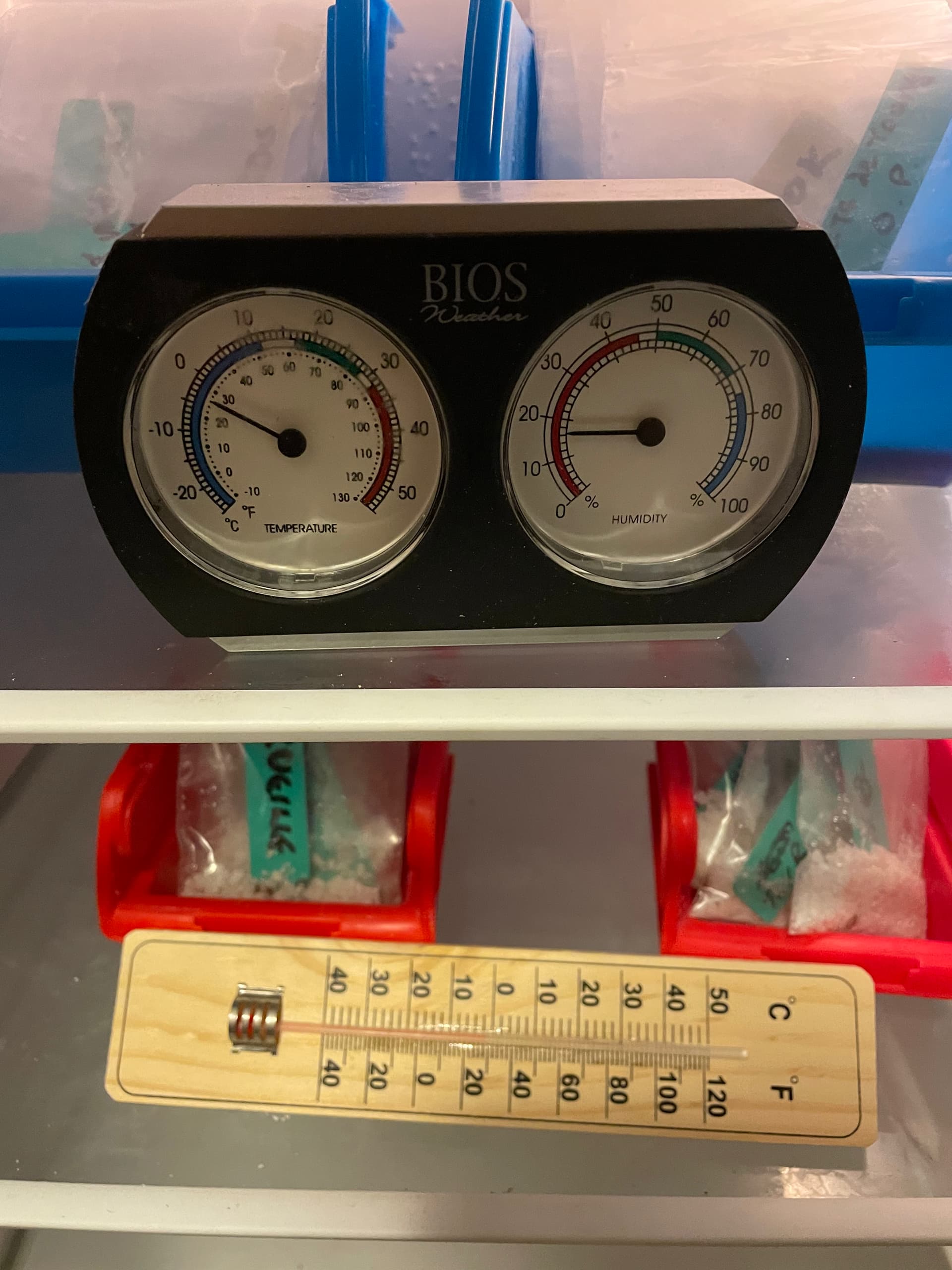Moving to stratification started early in Oct 2.
Prior to, economical hobby size plastic bags 2”and 4” wide of harvested seeds (1500 seeds +5% -25%) opened for ~2weeks to air drying) and occasionally shaken - reason? No science, just want them surface dried and separated for stratifying .
Pearlite added, to bags, and shaken to ensure separation ( no science for pearlite reason - prefer pearlite for visual acuity).
Hard water added (whats available) with turkey baster until visible. Shaken again. - any visible liquid water drained.
Seeds soaked for a couple or three days in damp bag at 66-72F.
Placed at just below 0C, and better than winter Arctic humidity levels (l think winter Arctic around 0.1 -03%).
Due to cold air sinks, bin shelving approach, and monetary preferences, two economical (read cheap) thermometers used in mini freezer/fridge as opposed to thermocouples.
Usually checked every week or so and more water added if perlite - seed bag appears desiccated. Use 1.0 ml syringe.
Plan for 5-6 months of dormancy at the slightly below zero for seeds. Then phase two to come … or where rubber meets the road. Need to balance transfer to germinating station with using station for germinating sweet peas indoors for May plant - first call on grow lights.
The crosses should be mostly hardy in my zone so grow season length not an issue with sweet pea priority - germination is the achilles heel to my program.
Seed bags closely packed upright for space in odds n sods bins. Don’t need to worry about germination in bag as transfer seeds to top of organic soul and cover with pearlite.
Using this stratification method for hardy seed parent(s) (1 at least) for zone-4 Cdn allowed breaking through a road block that was fouling me.
Expect at least 5-10% germination depending which of 64 crosses. Better comes with tweaking DTR.

![]() .
.